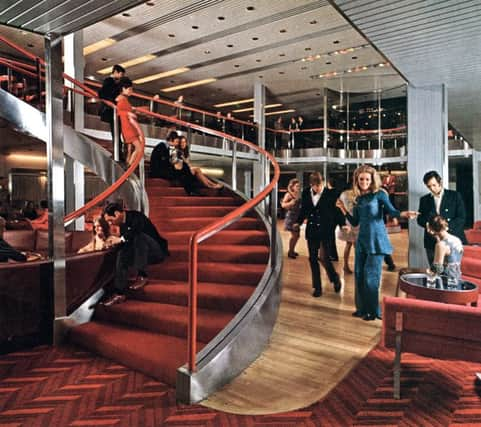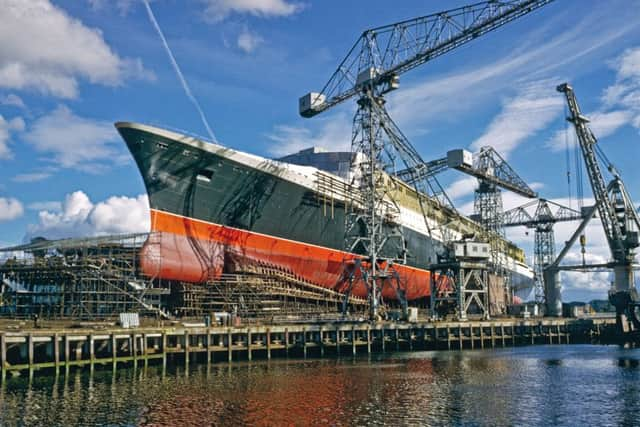Sixties splendour revived as exhibition celebrates QE2 Formica fest


Now, an exhibition at the Glasgow School of Art is to commemorate the era-defining design behind the most famous vessel from the Clyde’s shipbuilding heyday.
QE2: Fifty Years Later brings together memorabilia and images, many on public view for the first time, dating back to the glory days of the renowned transatlantic ocean liner.
Advertisement
Hide AdMany of the liner’s original fixtures and furnishings were removed courtesy of successive refits down the years, but the curator of the exhibition said it was crucial to remember just how striking her design had been in the 1960s.


Dr Bruce Peter, professor in design history at the Glasgow School of Art, said: “The QE2 was one of the masterpieces of 1960s design. From the industrial design of the exterior, right down to the ashtrays and door handles, it was a remarkable achievement.
“The irony is that such a brilliant piece of design only lasted in its original incarnation for three years. By the 1970s, people wanted a more retro experience.”
The exhibition features a host of never before shown Kodachrome colour slides taken by a New York tugmaster after the QE2’s maiden voyage. The pictures were bought by Peter on eBay and will now take pride of place in the Glasgow show.
Dr Stephen Payne, the naval architect who designed the Cunard ocean liner, RMS Queen Mary 2, said the QE2’s genesis was a pivotal moment in British maritime history.


“Cunard wanted to completely break with all their tradition and history,” he told Scotland on Sunday. “They saw the QE2 as taking a modernist approach and even had an advertising campaign that said ‘ships have been boring long enough’.
Advertisement
Hide Ad“The look was unlike anything Cunard had done before, although it was a pure 1960s look and I think parts of it did date quite quickly.”
The QE2’s design co-ordinators, James Gardner and Dennis Lennon, were tasked by Cunard with realising “the visual character and design treatment” of the ship. Gardner, a former jewellery designer with Cartier, was responsible for the exterior, envisaging a vessel that would resemble a large yacht rather than the stately yet cumbersome grand ships of yesteryear.
Advertisement
Hide AdLennon, charged with bringing the QE2’s interiors to life, oversaw a team including the likes of Jon Bannenberg and Gaby Schreiber. Lennon, an architect and designer who went on to remodel the Ritz Hotel in London, had a straightforward goal in mind. “What we have tried to create,” he remarked at the time, “is a setting for the world’s best party.”
The QE2 was retired a decade ago and is currently languishing in Dubai amid long delayed plans to convert her into a luxury hotel. There has been speculation that the work is nearing completion and the ship, now berthed in Port Rashid, will welcome its first visitors as early as the spring. DP World, the firm overseeing the development, did not respond to inquiries.
It remains unclear what, if any, changes have been made to the ship’s interior, but Payne said he hoped they were modest.
“What I’ve heard from various sources and people who’ve visited the ship not so long ago is that not much has changed from when she left service,” he added. “Hopefully, the interiors will be largely as they were.”
QE2: 50 Years Later is being held at the Glasgow School of Art’s Reid building and runs until 4 March.